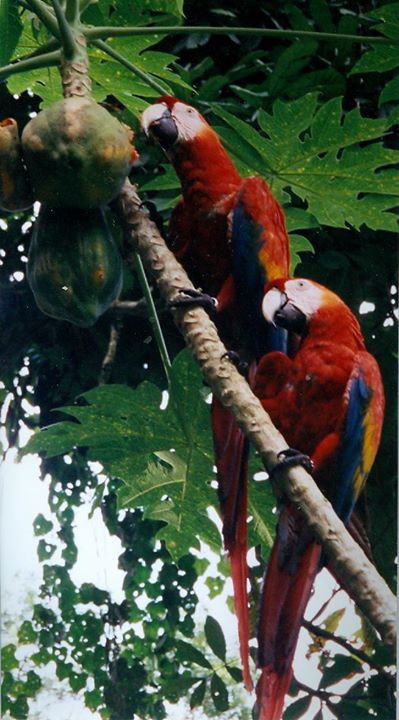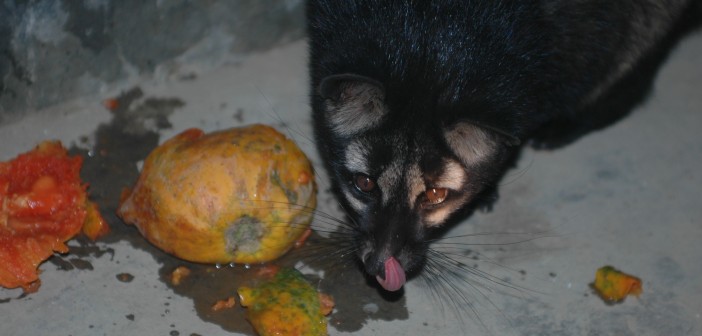A common objection posed by meat-eaters to considering a vegetarian diet is that “plants have feelings” which may be comparable to the feelings of animals, or that the result of a vegetarian diet is for more plants to die than animals and thus the net amount of killing is somehow equal.
While it is essential to realize that these arguments are virtually always made by people as a way to dismiss the idea of not eating animals without having to seriously consider the moral advantage of a vegetarian diet, the vegetarian advocate must be prepared to respond to these objections. There are three main points to understand.
First, the sole biological purpose of pain is to ensure that a living organism gets away from or avoids potentially life-threatening dangers. Since plants are unable to escape life-threatening situations (with a few very rare exceptions), there is no reason to imagine that plants would have evolved a heightened sense of pain. While plants appear to possess sentience, it is qualitatively different from animal consciousness. Plants do respond to stimuli and have evolved biological defenses against insect and microbial threats and occasionally produce poisons to keep animals away, but there is no rational basis for believing that plants suffer as animals suffer. That is not to say, however, that plants have no preference for life over death. To explore the consciousness of plants as well as fungi and single-celled organisms, there is no better place to begin than Jeremy Narby’s book Intelligence in Nature.
Second, a common means of reproduction by plants is via seeds embedded in edible fruit produced expressly for the purpose of attracting animals who will then consume the fruit and later drop the seeds along with natural manure fertilizer. Plants first appeared on the earth more than a billion years ago. But since the time animals emerged––only 600 million years ago––plants and animals have co-evolved in remarkable ways. The first seeding plants evolved 350 million years ago, and their reproductive strategy relied on animals to spread the seeds. The flowers that so delight us were produced by plants to attract nectar-eating creatures such as bees who transfer pollen from one plant to another. Plants seem to know when their pollinating species are active and in proximity from such indicators as bark-nibbling and pecking, and plants may conserve moisture and energy by not fruiting until migratory or hibernating pollinators are present. The point of fruit, nut, grain, and nectar production by plants is for animals to eat it, and thus to aid in the propagation of plants.
Third, while humans and other animals sometimes eat the entire plant or otherwise destroy the plant during feeding or harvesting, the cost of meat production in terms of the amount of plant protein needed to feed an animal to produce meat is so high that people are responsible for far less plant consumption by eating plants directly rather than eating animals who are fed plant protein to produce animal protein. It takes approximately 20 pounds of plant protein to provide one pound of beef. The plant protein/meat ratio is lower for the production of other kinds of animal flesh, but a pound of any kind of meat costs several times more plant protein than if one eats the plant protein directly. This was basically the argument used by Francis Moore Lappe in Diet for a Small Planet, when she pointed out that many more people could be fed (and fewer plants would lose their lives) if people adopted a vegetarian diet.
It is true that no individual can exist without some other organisms losing their lives––even if it is only incidental or accidental. Not even a vegan diet––which forbids all animal products including eggs, dairy products, and honey––ensures that no animals were killed or injured during the production of the food. Mice and other field dwellers are always killed or dislocated during planting and harvesting, and insects and so-called vermin species may in fact be even more ruthlessly persecuted by organic farmers than by more typical agribusinesses because the profit margin may be smaller on the typically smaller organic farms.
But if one truly believes that killing a carrot is as bad as killing an animal, then the moral imperative is to refrain from eating either instead of eating both. Thousands of years ago, the Jains of India categorized life-forms by order of sentience, as a guide to eating in the spirit of “ahimsa”––the guiding principle of Jainism which directs people to live their lives so as to do the least harm to others. Single-celled organisms (which had not yet been scientifically discovered) were listed as the lowest form of life. Next were listed plants, then fungi, then animals. Using the principle of ahimsa as a guide, some Jains to this day refrain from eating whole plants such as carrots and potatoes or fungi such as mushrooms, but Jains still acknowledge that eating animals is many times worse in terms of causing unnecessary pain and suffering than eating whole plants.
I t is not necessary to deny that plants possess some degree of sentience in order to make a case against eating meat. Jagadish Chandra Bose (1858-1937), considered a pioneer in the field of biophysics, was interested in the ability of plants to respond to stimuli. According to his Wikipedia entry, Bose used a crescograph, his own invention, “to measure plant response to various stimuli, and thereby scientifically proved parallelism between animal and plant tissues…To facilitate his research, he constructed automatic recorders capable of registering extremely slight movements; these instruments produced some striking results, such as Bose’s demonstration of an apparent power of feeling in plants, exemplified by the quivering of injured plants…He was also the first to study the action of microwaves in plant tissues and corresponding changes in the cell membrane potential. He researched the mechanism of the seasonal effect on plants, the effect of chemical inhibitors on plant stimuli, and the effect of temperature. From the analysis of the variation of the cell membrane potential of plants under different circumstances, he hypothesised that plants can ‘feel pain, understand affection etc.'” His books include Response in the Living and Non-Living (1902) and The Nervous Mechanism of Plants (1926).
t is not necessary to deny that plants possess some degree of sentience in order to make a case against eating meat. Jagadish Chandra Bose (1858-1937), considered a pioneer in the field of biophysics, was interested in the ability of plants to respond to stimuli. According to his Wikipedia entry, Bose used a crescograph, his own invention, “to measure plant response to various stimuli, and thereby scientifically proved parallelism between animal and plant tissues…To facilitate his research, he constructed automatic recorders capable of registering extremely slight movements; these instruments produced some striking results, such as Bose’s demonstration of an apparent power of feeling in plants, exemplified by the quivering of injured plants…He was also the first to study the action of microwaves in plant tissues and corresponding changes in the cell membrane potential. He researched the mechanism of the seasonal effect on plants, the effect of chemical inhibitors on plant stimuli, and the effect of temperature. From the analysis of the variation of the cell membrane potential of plants under different circumstances, he hypothesised that plants can ‘feel pain, understand affection etc.'” His books include Response in the Living and Non-Living (1902) and The Nervous Mechanism of Plants (1926).
One may acknowledge that plants possess some level of sentience while prioritizing the welfare of animals. And if we wish to reduce harm done to plants, fewer plants are damaged or destroyed when we eat plants directly rather than eating the animals who ate the plants.





